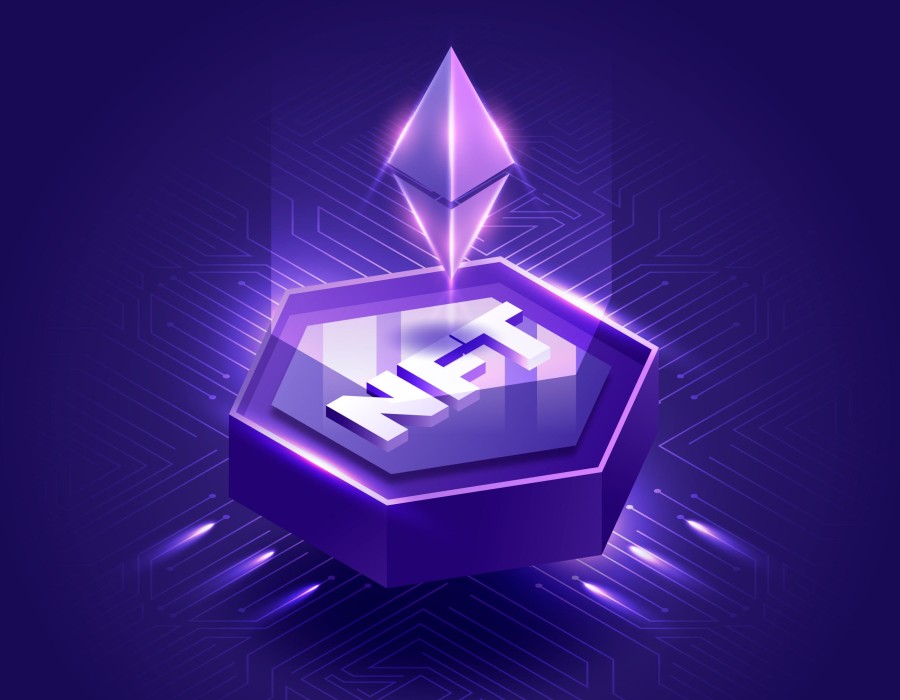In the ever-evolving landscape of blockchain technology and digital assets, Fractional Non-Fungible Tokens (NFTs) have emerged as a groundbreaking concept. These innovative tokens offer a unique approach to ownership and investment, allowing individuals to own a fraction of high-value assets such as artwork, real estate, and intellectual property. In this article, we delve into the working, benefits, and use cases of Fractional NFTs, exploring their potential to revolutionize the way we perceive ownership and investment.
Understanding Fractional Ownership
What is fractional ownership?
Fractional ownership refers to the division of ownership rights into smaller, more manageable units. Traditionally associated with real estate and luxury assets, fractional ownership allows multiple individuals to collectively own a single asset, thereby reducing the financial barrier to entry.
How does it apply to NFTs?
In the context of NFTs, fractional ownership involves dividing the ownership of a non-fungible token into smaller shares, or fractions. Each fraction represents a percentage of the total asset, enabling multiple investors to own a stake in high-value digital assets.
Working of Fractional NFTs
Creation of fractionalized NFTs
Fractionalized NFTs are created through the process of tokenization, wherein a high-value asset is represented as a digital token on a blockchain network. Smart contracts are utilized to divide the ownership of the NFT into fungible tokens, each representing a fraction of the original asset.
Ownership distribution
Once the NFT is fractionalized, the ownership shares are distributed among investors, who acquire ownership rights proportional to their investment. This allows individuals to own a fraction of valuable assets that would otherwise be financially inaccessible.
Smart contracts and blockchain technology
Smart contracts play a crucial role in facilitating the creation and management of fractional NFTs. These self-executing contracts are deployed on blockchain networks, ensuring transparent and immutable transactions. Through smart contracts, fractional owners can automate processes such as dividend distribution and voting rights.
Benefits of Fractional NFTs
Accessibility to high-value assets
Fractional NFTs democratize access to high-value assets, allowing individuals to invest in assets such as artwork, real estate, and collectibles without the need for substantial capital.
Diversification of investment
By fractionalizing assets, investors can diversify their portfolios and mitigate risk. Fractional NFTs enable investors to access a diverse range of assets, reducing their exposure to market volatility.
Democratization of ownership
Fractional NFTs promote financial inclusion by democratizing ownership. Individuals from diverse backgrounds can participate in asset ownership, fostering a more inclusive and equitable financial ecosystem.
Use Cases of Fractional NFTs
Art and collectibles
Fractional NFTs are revolutionizing the art world by enabling art lovers to own a share of iconic artworks and collectibles. Artists can tokenize their creations, allowing fans to invest in their work and share in its success.
Real estate
In the real estate sector, fractional NFTs offer a novel approach to property investment. Investors can purchase fractions of properties, gaining exposure to the real estate market without the burden of property management.
Intellectual property
Fractional NFTs empower content creators to monetize their intellectual property through tokenization. Musicians, writers, and filmmakers can tokenize their creations, allowing fans to invest in their artistic endeavors.
Challenges and Considerations
Regulatory concerns
The regulatory landscape surrounding fractional NFTs is still evolving, raising concerns about compliance and legal risks. Regulators are scrutinizing the market to ensure investor protection and mitigate the risk of fraudulent activities.
Governance and decision-making
Decentralized governance mechanisms are essential for managing fractional NFTs effectively. However, governance structures must balance transparency and autonomy, ensuring fair decision-making processes among fractional owners.
Liquidity and trading
Ensuring liquidity in the secondary market is crucial for the success of fractional NFTs. Investors require seamless trading mechanisms to buy and sell fractionalized assets, enhancing market efficiency and liquidity.
Future Outlook
Fractional NFTs hold immense potential to transform the landscape of ownership and investment. As blockchain technology continues to evolve, fractional NFTs are poised to become mainstream investment instruments, offering individuals unprecedented access to high-value assets. Integration with decentralized finance (DeFi) protocols further enhances the liquidity and utility of fractional NFTs, opening up new avenues for innovation and growth.
Conclusion
Fractional NFTs represent a paradigm shift in the way we perceive ownership and investment. By fractionalizing high-value assets, these innovative tokens democratize access to wealth and promote financial inclusion. Despite regulatory challenges and technical considerations, fractional NFTs offer unparalleled opportunities for investors to diversify their portfolios and participate in the digital economy.
FAQs
Q. What are Fractional NFTs?
Fractional NFTs are digital tokens that represent a fraction of ownership in a non-fungible asset, such as artwork, real estate, or intellectual property.
Q. How are fractionalized NFTs created?
Fractionalized NFTs are created through the process of tokenization, wherein a high-value asset is represented as a digital token on a blockchain network. Smart contracts are utilized to
divide the ownership of the NFT into fractions.
Q. What are the benefits of fractional ownership?
Fractional ownership enables individuals to invest in high-value assets without the need for substantial capital. It promotes diversification of investment portfolios and democratizes access to ownership.
Q. Can anyone invest in Fractional NFTs?
Yes, fractional NFTs offer inclusive investment opportunities, allowing individuals from diverse backgrounds to participate in asset ownership.





Comments